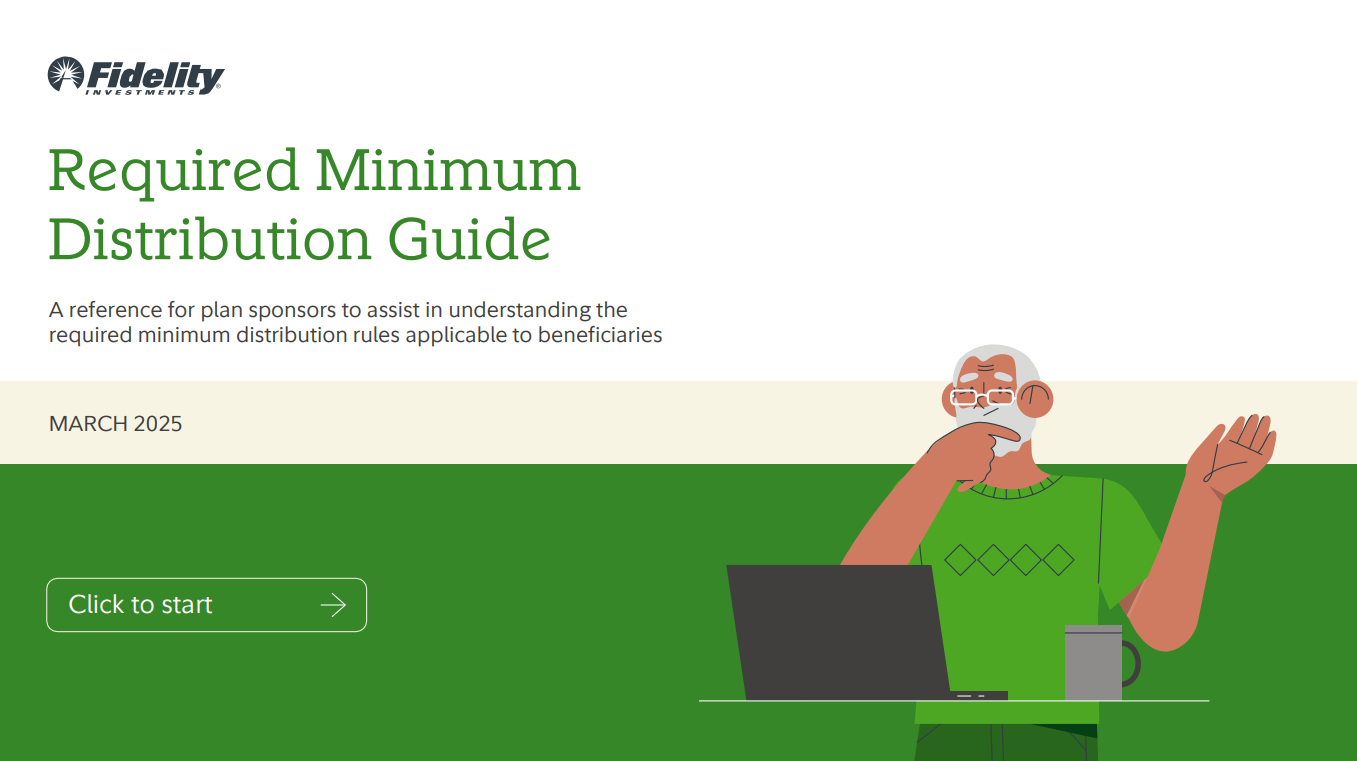Required Minimum Distribution Guide - March 2025
A reference for plan sponsors to assist in understanding the required minimum distribution rules applicable to beneficiaries
Beneficiaries of a deceased employee in a defined contribution retirement plan must receive required minimum distributions (RMDs). The RMD rules were updated by the SECURE 1.0 Act, and the SECURE 2.0 Act, as well as by the 2024 final and proposed regulations.
Fidelity has summarized the key aspects of the RMD rules in the Required Minimum Distribution Guide into the following sections:
Section One - Background:
This section uses a question-and-answer format to provide an overview of the RMD rules that apply to a beneficiary upon the death of an employee.
Section Two - RMD Flowcharts:
This section summarizes the RMD rules into two flowcharts (based on an employee's death before or after required beginning date) that identify the distribution options available to a beneficiary, when the money in a defined contribution plan or IRA must be distributed, and how funds are distributed to the beneficiary of a deceased beneficiary where the account was not completely distributed before their death.
Section Three – Fidelity Workplace Services LLC Administration of RMDs for Defined Contribution Plans:
This section includes information about Fidelity’s administration of the RMD rules, including changes made by the IRS in the 2024 Final and Proposed Regulations, which reflect updates to the RMD rules applicable to employees and beneficiaries.
The information in the Guide is based on Fidelity’s interpretation of the SECURE 1.0 Act, SECURE 2.0 Act and the 2024 Final and Proposed Regulations, and there may be other reasonable interpretations of certain provisions. This Guide is not intended to constitute legal or tax advice.
